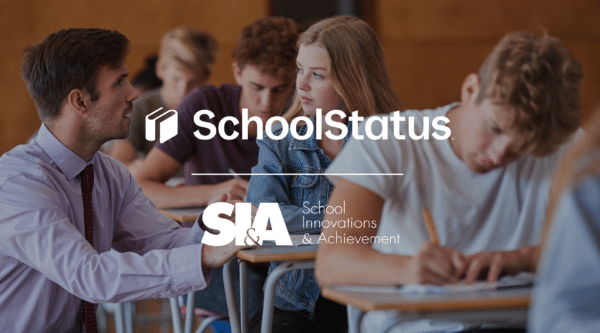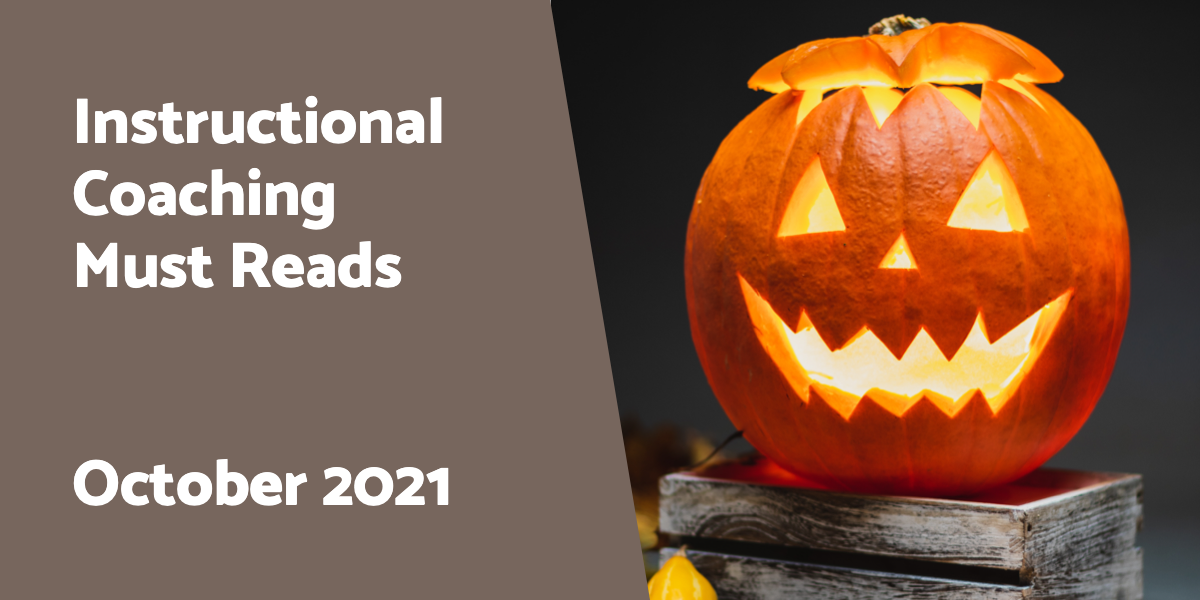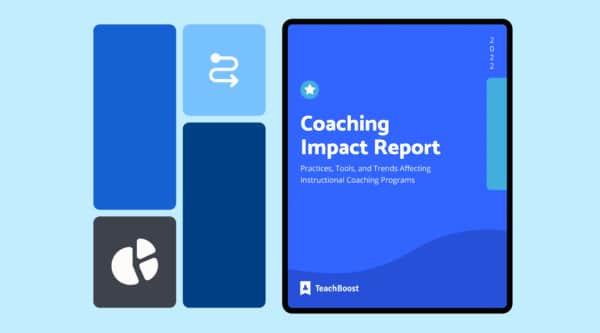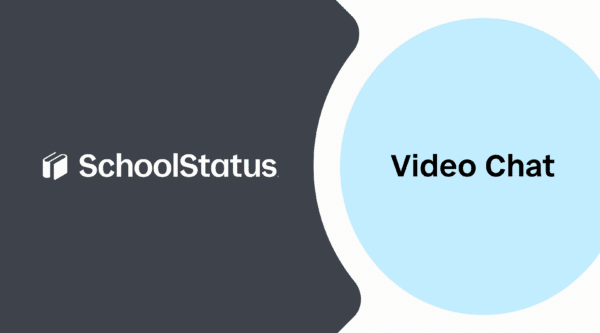


This month we’re passing out a handful of the top articles from October’s Weekly Coaching Roundups. Indulge in four ways to build a genuine connection with teachers, how to use the “D.A.S.H.” coaching framework to spark data-driven conversation, what coaching attributes teachers do and do not value in an IC, where to begin your next coaching cycle, and more. Enjoy!
Never miss out on the latest coaching news, tips, and tools. Join our weekly coaching roundup to get articles like these sent directly to your inbox every week!
Most-Viewed Encourage Communication with the D.A.S.H Model
When teachers feel like you’re on their team, they’re more willing to partner with you. Michael Sonbert promotes the “D.A.S.H.” coaching framework for coaches to relieve teacher anxiety and drive genuine, data-driven conversations with those they support.
“All communication about what’s happening in the teacher’s room should be grounded in data.
Data is neutral. Data is non-judgmental. Collecting this effectively is the basis of constructive communication with your teachers. . . .
Share data precisely and eliminate any sugar-coating—even if it is tougher to engage students during the period right after lunch, it’s certainly not impossible.”
A New Tool for PD: Box It Out
Stephanie Affinito takes us step-by-step through an easy three-part PD activity that sparks conversation and deep thinking with participants.
“This may be the easiest and most versatile idea I have tried to
engage teachers in discussion, reflection and collaboration during professional learning sessions. This incredibly simple activity requires no preparation,
can be used in virtually any professional learning session, can be personalized to whatever content you are hoping to explore and is sure to spark thinking and discussion.”
Embodying a Coaching Mindset
Are you looking to dive below the surface in your coaching conversations? Miriam Guerrero Cheuk highlights four ways to build a genuine connection with teachers through life-giving coaching conversations.
”
Full presence is not letting your assumptions and world lens affect the data you filter and the conclusions you draw. . . . Coaching the whole person allows us to understand better the coachee’s thoughts and emotions that in turn affect their actions.
Masterful coaches raise up the blinds to shine a light on limiting mental models. For transformational coaching to occur, one has to listen to what is (and what is not) said.”
Coaching Attributes
Vicki Collet surveyed teachers to learn what traits they do and do not value in an IC.
“Teachers often valued attributes in their coaches that they viewed as positive in themselves. . . .
Teachers don’t want a coach who is high-anxiety, someone who gets easily frustrated, or someone who is a natural complainer. They don’t want a coach who continually points out the negative.”
Apply to Pilot TeachBoost Coach!
TeachBoost Coach is the first technology platform to manage coaching cycles, goals, meetings, & evidence. It works on any device—so you’ll never miss an important moment with a teacher. Sign up below to try us out today!
{{cta(‘6d320956-4380-405e-8e93-06ed341bdca2’)}}
Where to Begin with Coaching Cycles
Diane Sweeney groups teachers into four quadrants based on their experience and collaborativeness level and explains why ICs should prioritize working with all types.
“If we target sub populations of teachers with coaching, we will undermine the precious resource that we do have. And if we just wait for the superheroes to participate, we may fail to engage a broad population of teachers. . . . Instead, we
actively engage them by sharing the benefits (or the ‘why’) for coaching and provide a variety of options for how they can get involved.”
Celebrating Wins Goals and Shared Goals
Sherry St. Clair shares a few tactics that leaders can use to praise individual and shared goal progress to help cultivate a culture of learning.
”
Reiterate goals in staff meetings, and let them inform all professional learning. Identify early progress indicators towards meeting each goal and track progress, offering additional instructional support to teachers as needed. . . .
Giving teachers the opportunity to publicly shine a light on their peers’ growth is a strong trust- and relationship-builder.”
Instructional Scouting
Ashley Taplin speaks to the benefits of pairing up with teachers to do “scouting walks” that combine peer observation, feedback, and reflection all at once.
“I decided I’d try rebranding learning walks to ‘scouting’ and
explain to teachers how excited I am for them to ‘scout’ with me– together scouting out ideas and practices from each other that they wanted to take back to their own classroom. . . . I felt that the entire process in which
we would identify each other’s successes and collaboratively debrief them into actionable steps to improve student learning, modeled steps of peer observation with a strengths based mindset.”
How to Engage in a Kick-Off Meeting
Kristin Houser provides five coaching moves that lay the foundation for an upcoming coaching cycle.
“The primary purpose of a coaching kick-off meeting is to
identify a focus for your upcoming coaching cycle with a teacher, familiarize your coachee with the logistics of the cycle and give them the opportunity to ask clarifying questions or express any concerns.”
{{cta(’34b13594-505a-497a-8a75-16ae35acf14d’)}}
Have some interesting instructional leadership news?
Share it with TeachBoost and we’ll highlight it here.
Photo by Łukasz Nieścioruk from Unsplash.
Stay Connected
News, articles, and tips for meeting your district's goals - delivered to your inbox.








